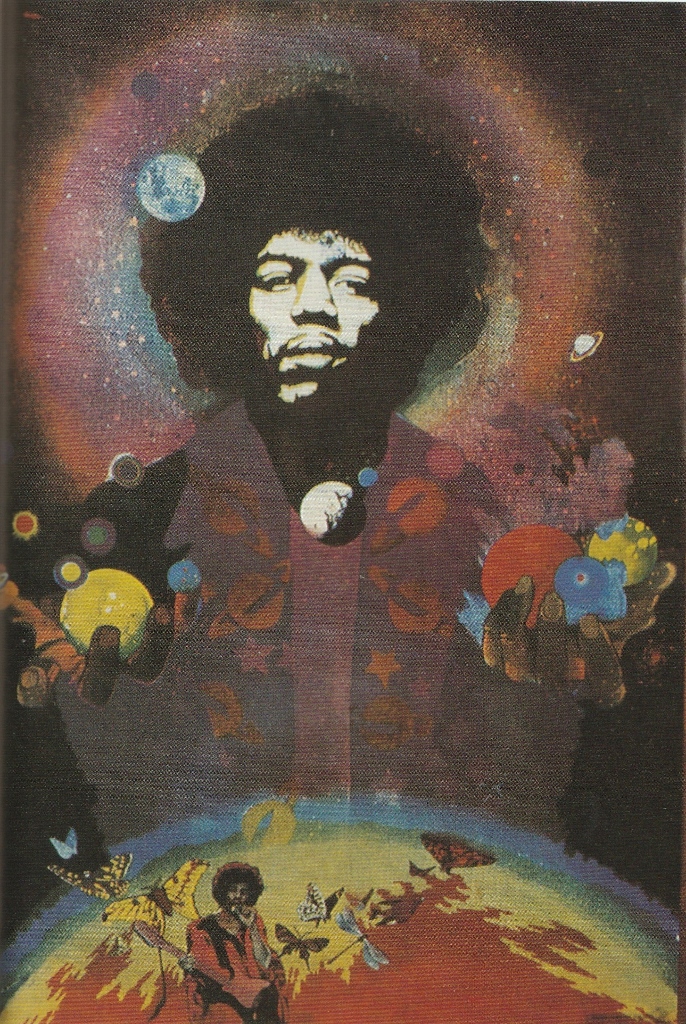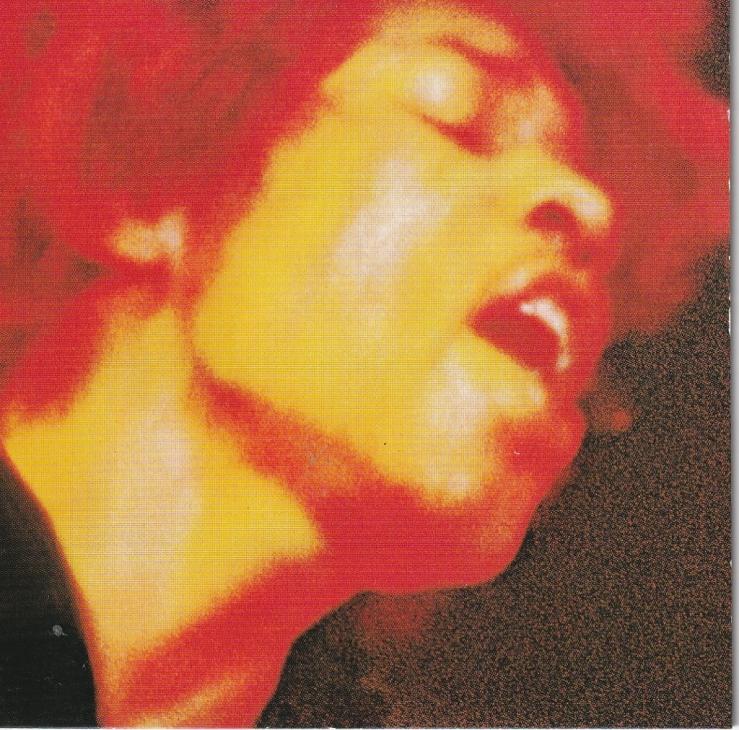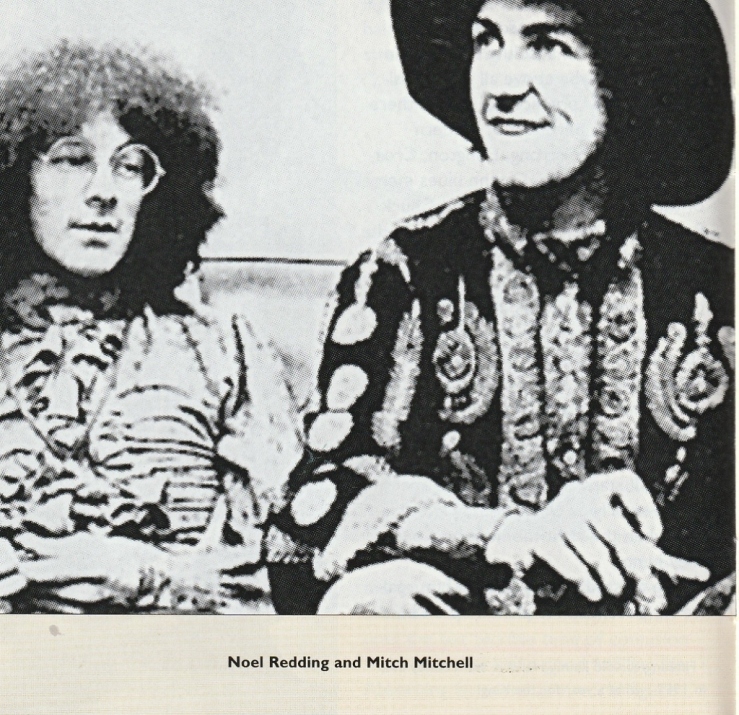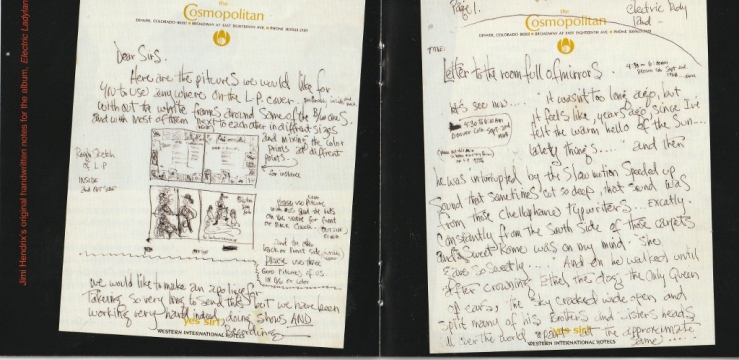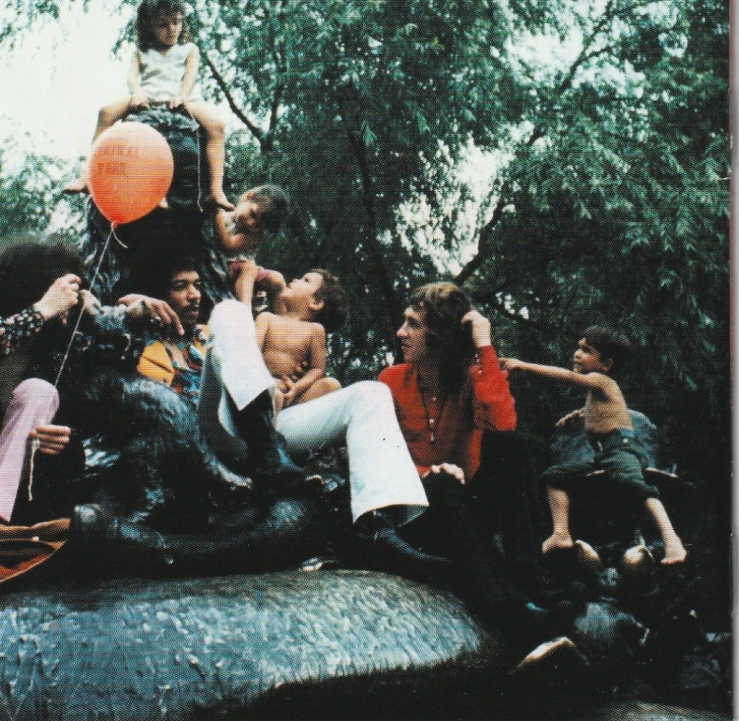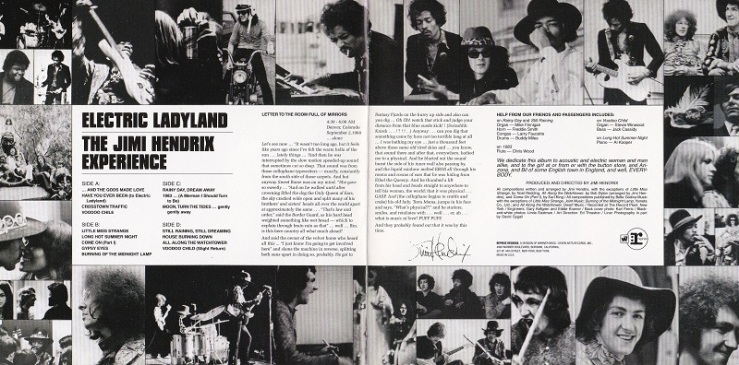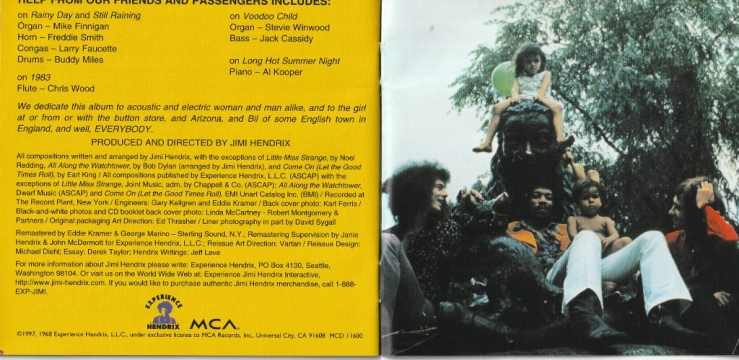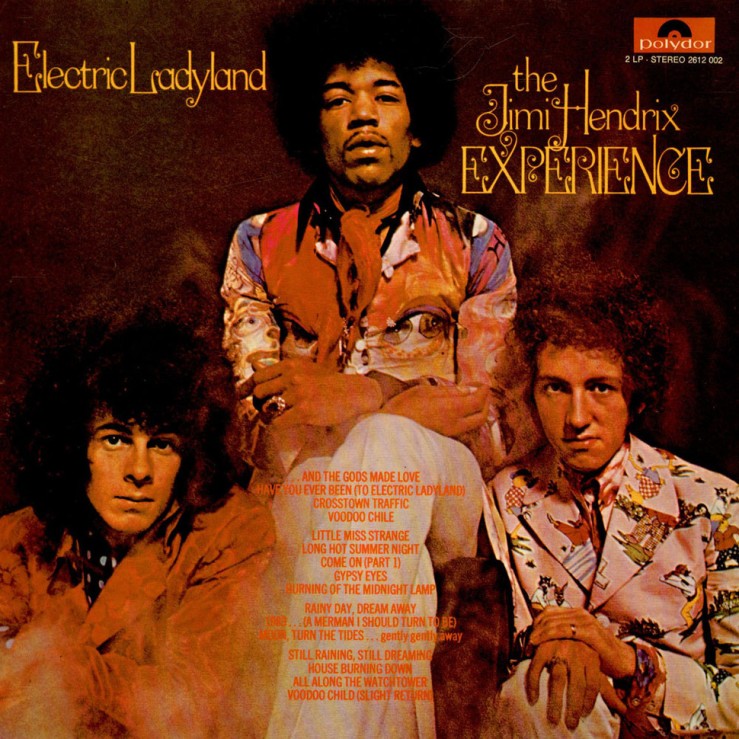To Hell-sinki and back? Nordic noir, ‘goth’n’roll’ or ‘Scandinavian blues’? Finnish band HIM explored the dark side of rock music for over twenty years, fusing the melancholy of their land’s folk music traditions with modern rock music…
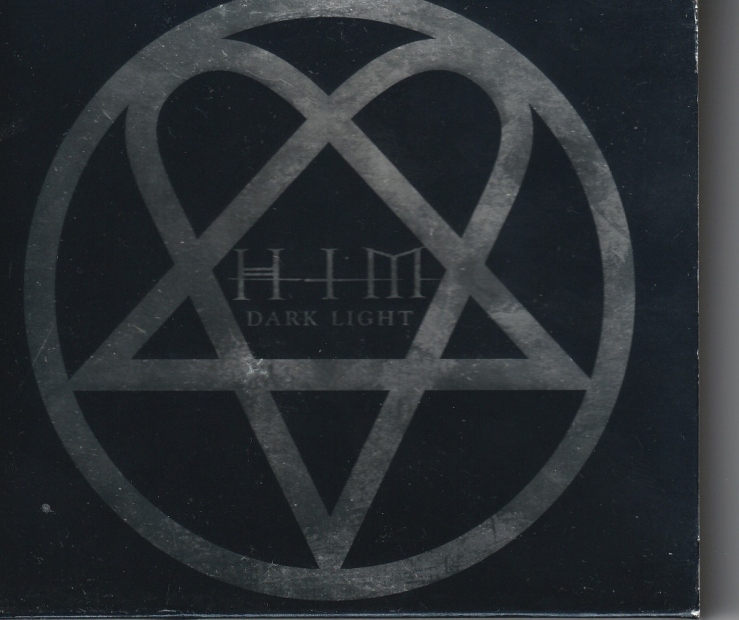
Originally conceived as His Infernal Majesty, the band became HIM in 1997, when founder member, singer and songwriter Ville Valo ‘realised that the satanic associations implied by the name His Infernal Majesty were inappropriate to the group.’ [1.]
“The name ‘His Infernal Majesty’ was intended as a joke,” he explained, “But people thought – because of our name and the fact that we’re from Scandinavia, that we were satan worshippers! And that, of course, attracted the wrong crowd!” [1.]
“Early on in Finland, we were considered to be pretty satanic, which I disputed in the press…So all these black metal kids bought tickets to our gigs just to stand at the front wearing corpse paint and spitting on us…” [1.]
The name was abbreviated to HIM, avoiding all those specific associations and easy to recognise and pronounce in most languages. The band did hit some trouble when first trying to ‘break’ in the United States, as there was a band called HiM there already – a dub/world music influenced group formed in 1995 by Doug Scharin, drummer for the bands Codeine, Rex and June of 44. After some legal work and an agreed financial payment from the Finns, the US combo added a suffix to their name, resolving the situation.
Ville Valo grew up in Oulunkylä, a suburb of Helsinki. He formed the original HIM in 1991 with his childhood friend Mikko “Mige” Paananen, both unusually playing bass. The first incarnation ended in 1993 when Mige had to start his national service, but Valo and guitarist Mikko “Linde” Lindström reformed the band in 1995.

Reinhardt Haydn, in his 2007 biography ‘HIM – His Infernal Majesty’, explains how the band created their own sub-genre:
“As a means of defining their ethos, image and sound to an often uncomprehending media, HIM have fabricated their very own sub-genre: love metal. “When we started out with the band in ’94 or whatever, we started to call ourselves ‘love metal’ because people had trouble categorising what we did…It’s a tongue-in-cheek sort of thing,” Ville explained to NME journalist Dan Silver, “We’ve got more sentimentality in our music than most of the metal acts and our songs are not based on hate, but on love – so that sounded funny – and it shows that we can laugh at ourselves.” [1.]
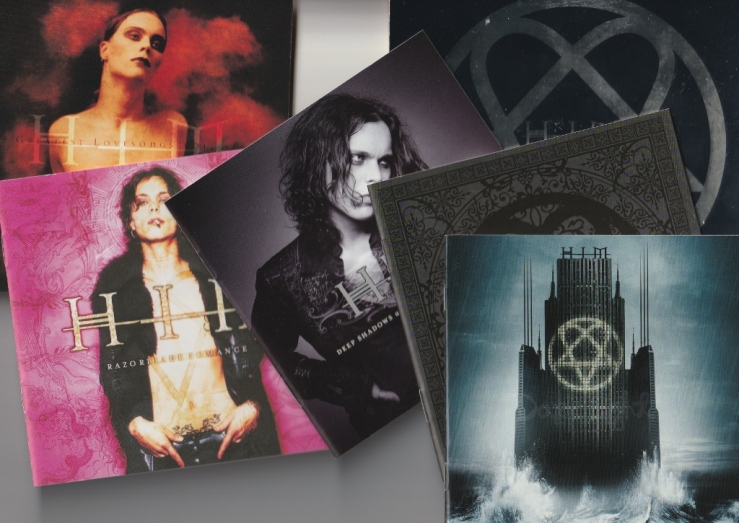
A progression of four studio albums preceded ‘Dark Light’, HIM developing their ‘Love Metal’ subgenre to great effect, mostly through songs written by Ville Valo, with a smattering of carefully-chosen cover versions added to the mix. They set out their stall with the EP ‘666 Ways To Love: Prologue’ in 1996, first album ‘Greatest Lovesongs Vol. 666’ following the year after. Over two years later came second album ‘Razorblade Romance’, with ‘Deep Shadows and Brilliant Highlights’ and ‘Love Metal’ released in 2001 and 2003 respectively. Musically, there is evidence of a progression, from the raw, dark gothic tones on the debut, through more technical playing, layering and production on the second and third albums to a more upbeat metal sound on ‘Love Metal’, their self-proclaimed sub-genre. The concepts are consistent throughout this journey to ‘Dark Light’: the contrast between dark and light, good and evil, romantic and dangerous – love songs versus 666 (the number of the beast), razorblades versus romance, shadows versus highlights…Valo’s lyrics explore a number of romantic and gothic themes in the songwriting and there is a balance of mood and tempo in the performances, creating light, shade, calm and energy. ‘Dark Light’ is arguably the pinnacle of HIM’s recordings, certainly to this point in their career if not overall, achieving consistently high quality in terms of writing, performance and production.
Ville describes what HIM wanted to achieve on ‘Dark Light’:
“I wanted them to be cool live songs, straight in the face kind of stuff. But it’s really melodic at the same time,” explained the vocalist. “It’s crazy, surreal, it’s weird, it’s David Lynch, it’s Tim Burton, but with all those things happening within the AC/DC context. You can still shake your hips to it, bang your head, or play air guitar.”
“My last name, Valo, means ‘light’ in Finnish. And the word ‘dark’ if you translate it straight, it just means ‘the crazy being’. ‘Dark’, in Finnish, meaning kind of ‘losing the plot’…So it’s like a kind of pun,” explained Ville. “And ‘Dark Light’ is nice because we had albums called ‘Deep Shadows and Brilliant Highlights’ and ‘Razorblade Romance’, so we’ve always had these opposites.”
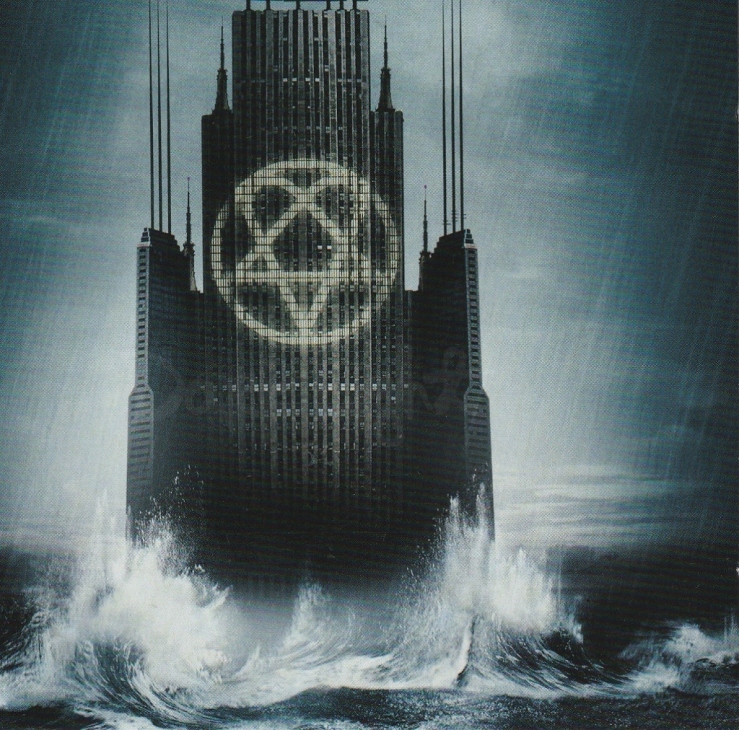
‘Dark Light’ was the debut album for Sire records and the first of the band’s recordings to be released worldwide simultaneously, on 26th September 2005. The record was produced by Tim Palmer, the British music producer whose pedigree includes mixing ‘Ten’ by Pearl Jam, amongst a number of ‘alternative’ rock acts and hugely successful bands like U2.
‘Vampire Heart’ opens the album, the song possibly influenced by Valo’s family background: His mother, Anita, had ancestral roots that could be traced back to Hungary: “My grandmother, who was of Hungarian/Romanian origins, did claim that we are descendants of Dracula,” Ville revealed. “But she is dead now and I can’t ask her about that anymore. I am doing some research on it, because it would be very cool to be a relative of a vampire.”
‘You can’t escape the wrath of my heart
Beating to your funeral song (You’re so alone)
All faith is lost for hell regained
And love dust in the hands of shame (Just be brave)
Let me bleed you this song of my heart deformed
Lead you along this path in the dark
Where I belong ’till I feel your warmth”
Valo was certainly mining the gothic tradition of the vampire in that first verse, then breaking into this catchy refrain:
‘Hold me
Like you held on to life
When all fears came alive and entombed me
Love me
Like you love the sun
Scorching the blood in my vampire heart’
“We’re a Goth band, more or less, so be careful! We’re super-miserable and super-mysterious.” – Ville Valo [1.]

The majestic ‘Rip Out The Wings Of A Butterfly’ follows, deserved of world-wide recognition. The song was the first single of the album, backed by a cover of The Ramones excellent ‘Poison Heart’, written by Dee Dee Ramone and expressing his lowdown and negative view of the world, based on true-life experiences on the streets.
One of a number of rock songs with butterfly references, the song compares well to great tunes like The Mission’s ‘Butterfly On A Wheel’, Smashing Pumpkins’ ‘Bullet With Butterfly Wings’ and ‘Catching The Butterfly’ by The Verve. The famous line ‘Who breaks a butterfly upon a wheel?’ forms line 308 of the 1735 ‘Epistle to Dr Arbuthnot’ in which Alexander Pope ‘responded to his physician’s word of caution about making satirical attacks on powerful people by sending him a selection of such attacks.’[2.] It was re-used by the press when reporting on the Rolling Stones’ notorious summer of 1967, when Mick Jagger and Keith Richards were sent to prison for drug offences after a police raid on a party, describing the UK establishment’s determination to punish the Rolling Stones, ‘Britain’s most insolent pop group’ : ‘It was a time when sex, drugs and rock’n’roll were becoming the normal lifestyle of the youth of the nation and the establishment saw the Rolling Stones as leading the charge.’ [3.] So, the butterfly reference continues to be used as a metaphor in rock, and HIM continue the tradition:
‘Heaven ablaze in our eyes
We’re standing still in time
The blood on our hands is the wine
We offer as sacrifice
Come on, and show them your love
Rip out the wings of a butterfly
For your soul, my love
Rip out the wings of a butterfly
For your soul’

‘Killing Loneliness’ was another single from the album, but, as is the case for much of HIM’s material, Valo’s lyrics could hardly be considered mainstream pop, even when delivered in his beautiful melody:
‘Memories sharp as daggers
Pierce into the flesh of today
Suicide of love took away all that matters
And buried the remains in an unmarked grave in your heart
With the venomous kiss you gave me
I’m killing loneliness (killing loneliness)
With the warmth of your arms you saved me
Oh, I’m killing loneliness with you
I’m killing loneliness that turned my heart into a tomb
I’m killing loneliness’
Like the poetry of the Romantics, Valo’s imagery is very evocative and dark, as demonstrated in all of the tracks on the album, holding it all together like a volume of verse. This is one of the reasons that this album in particular lifts above the others in HIM’s catalogue. Here is Valo exploring ‘Behind The Crimson Door’:
‘Covered the carcass of time with flowers
To send the scent of blame to the grave
Set the darkest thoughts on fire
And watched the ashes climb to Heaven’s gates
We hide behind the crimson door
While the summer is killed by the fall
Alive behind the crimson door
While the winter sings:
“Your love will be the death of me” (Death of me)
“Your love will be the death of me” ’
Not bad for a poet writing in their second language!

The album’s artwork was designed by Ville Valo, who explains:
“There’s a big high-rise Gotham City kind of building with a HIM logo on top and then the windows being lit, or the only windows being lit form the heartagram, and then it’s in the middle of a raging sea so it’s like post-apocalyptic, like a ‘Day After Tomorrow’ kind of thing,” he explained. “We wanted it to be really cinematic, as the music is, so it looks more like a movie poster than an actual artwork for a rock band.”
The artwork is a perfect complement to the music, building on Valo’s previous graphics and creating a coherent vision. The black slipcase features the ‘heartagram’ the trademarked symbol of the band, which was created by vocalist Valo on his twentieth birthday in 1996. A combination of a heart and a pentagram, according to Valo, the heartagram is meant to represent the juxtaposition of ‘the soft and the hard, the male and the female, the yin and the yang’. Valo has also explained that the heart represents the softer musical side of the band, while the pentagram symbolizes their heavier influences.

Three further studio albums were released after ‘Dark Light’: ‘Venus Doom’ in 2007, ‘Screamworks: Love in Theory and Practice’ in 2010 and ‘Tears on Tape’ in 2013. On 5th March 2017, HIM announced the band would be disbanding following a farewell tour that same year, Valo stating: “After quarter of a century of love and metal intertwined we sincerely feel HIM has run its unnatural course and adieus must be said in order to make way for sights, scents and sounds yet unexplored. We completed the pattern, solved the puzzle and turned the key. Thank you.”
‘Dark Light’ – band personnel:
Ville Valo − lead vocals, art direction
Mikko ‘Linde’ Lindström − guitar
Mikko ‘Mige’ Paananen − bass
Janne ‘Burton’ Puurtinen − keyboards
Mika ‘Gas Lipstick’ Karppinen − drums
‘Dark Light’ tracklisting:
- Vampire Heart
- Rip Out The Wings of a Butterfly
- Under the Rose
- Killing Loneliness
- Dark Light
- Behind the Crimson Door
- The Face of God
- Drunk on Shadows
- Play Dead
- In the Nightside of Eden
References and quotes:
1. Haydn, Reinhardt (2007). ‘HIM – His Infernal Majesty’. London: Plexus
2. https://en.wikipedia.org/wiki/Who_breaks_a_butterfly_upon_a_wheel%3F
3. https://beaconfilms2011.blogspot.com/2012/02/who-breaks-butterfly-upon-wheel.html
Lyrics and music:
HIM ‘Dark Light’ CD
Photographs:
HIM ‘Dark Light’ CD


